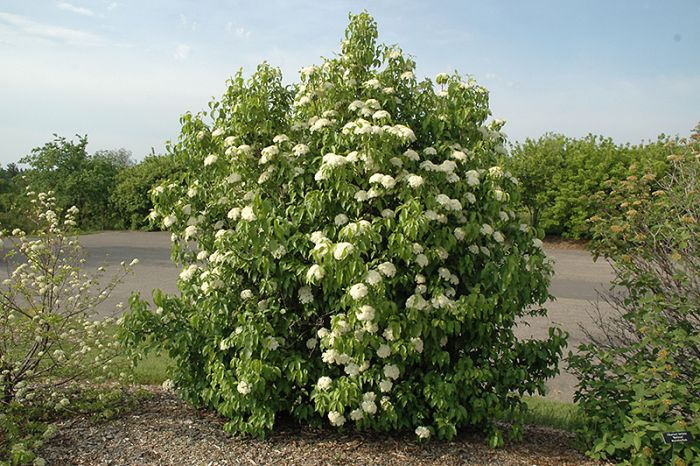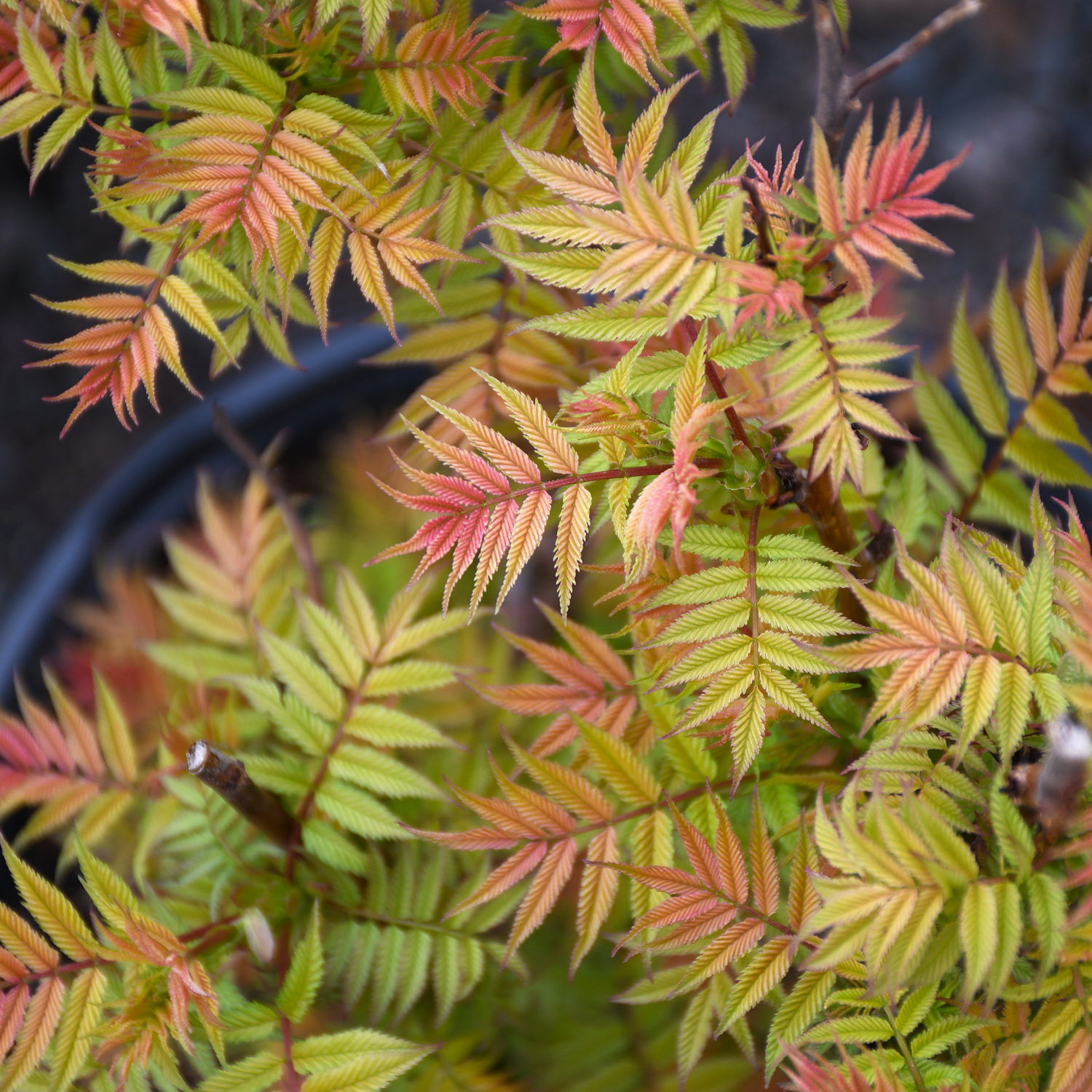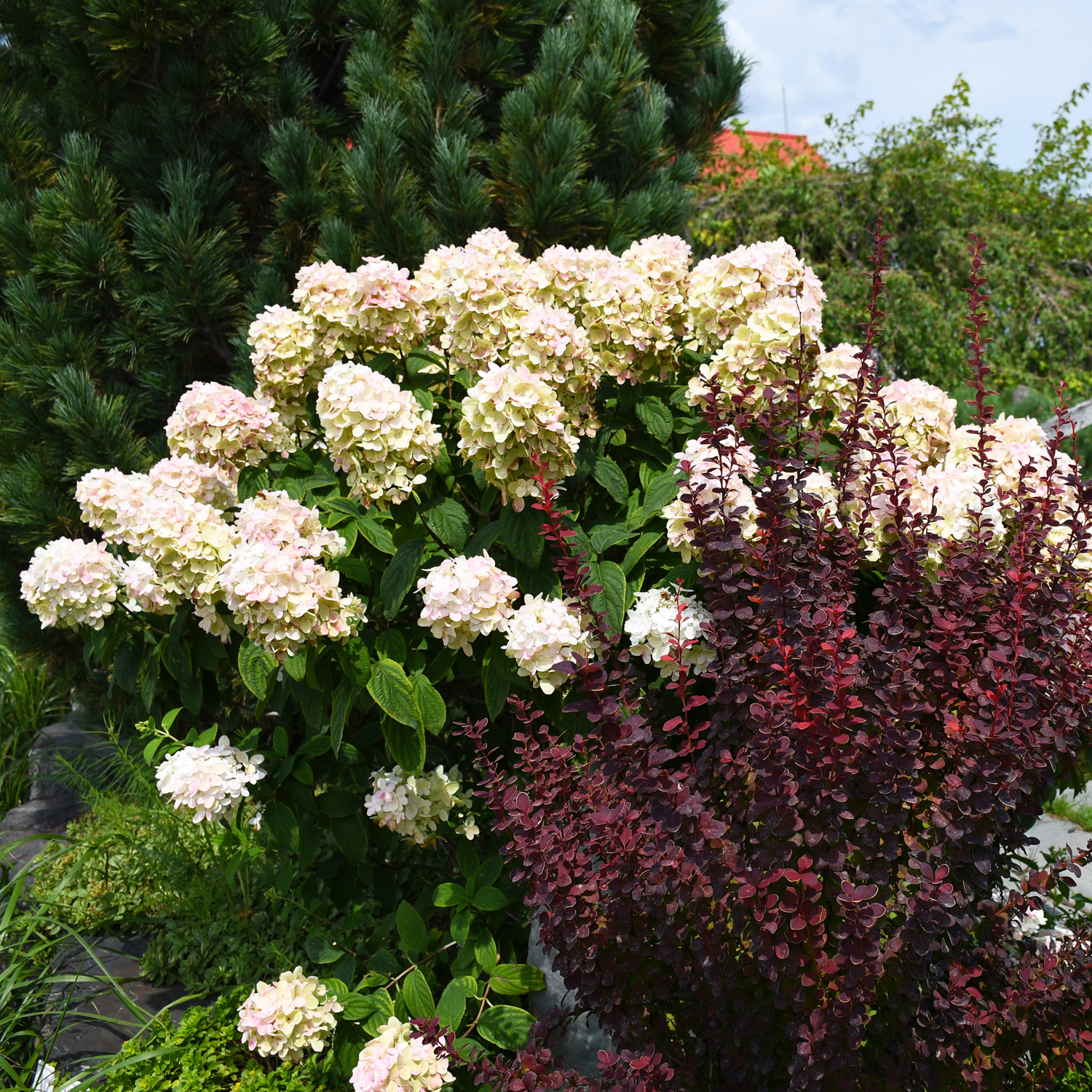Viburnum, Nannyberry Shrub

Out of stock
Sold out for the season- Sun Preference
- Full-Sun, Part-Sun
Description
Very large, creamy white flower clusters explode against the glossy green foliage. In autumn, the pendulous blue black fruits glisten amongst reddish purple leaves. Excellent food source for birds. Tolerates heavy, wet soils.
Minnesota's Largest Selection of Shrubs
Elevate your landscaping with Gertens' unmatched variety of shrubs! Selecting the right shrubs for your backyard can enhance its beauty and functionality. Consider factors like sunlight, soil type, and mature size when choosing shrubs. For sunny areas, flowering shrubs like roses or hydrangeas can add color and charm. In shady spots, opt for shrubs like azaleas or hostas. Evergreen shrubs provide year-round interest and privacy, while deciduous shrubs offer seasonal color changes. At Gertens, we offer a wide selection of shrubs to suit every backyard need.
Details
Height: 20 feet
Spread: 15 feet
Sunlight: ![]()
![]()
![]()
Hardiness Zone: 2b
Other Names: Sheepberry
Description:
A magnificent yet under-utilized native shrub with many endearing qualities; large clusters of creamy, white flowers in spring; showy blue fruit in fall and reliable fall color;an upright spreading plant,;hardy and adaptable, can be grown as a small tree
Ornamental Features
Nannyberry features showy creamy white flat-top flowers at the ends of the branches in mid spring. The royal blue fruits are held in abundance in spectacular clusters from late summer to late winter. It has dark green foliage throughout the season. The glossy pointy leaves turn an outstanding brick red in the fall.
Landscape Attributes
Nannyberry is a multi-stemmed deciduous shrub with an upright spreading habit of growth. Its average texture blends into the landscape, but can be balanced by one or two finer or coarser trees or shrubs for an effective composition.
This shrub will require occasional maintenance and upkeep, and should only be pruned after flowering to avoid removing any of the current season's flowers. It is a good choice for attracting birds to your yard, but is not particularly attractive to deer who tend to leave it alone in favor of tastier treats. Gardeners should be aware of the following characteristic(s) that may warrant special consideration;
- Suckering
Nannyberry is recommended for the following landscape applications;
- Accent
- Mass Planting
- Hedges/Screening
- General Garden Use
- Naturalizing And Woodland Gardens
Planting & Growing
Nannyberry will grow to be about 20 feet tall at maturity, with a spread of 15 feet. It tends to be a little leggy, with a typical clearance of 4 feet from the ground, and is suitable for planting under power lines. It grows at a medium rate, and under ideal conditions can be expected to live for 40 years or more.
This shrub performs well in both full sun and full shade. It is very adaptable to both dry and moist locations, and should do just fine under average home landscape conditions. It is not particular as to soil type or pH. It is highly tolerant of urban pollution and will even thrive in inner city environments. This species is native to parts of North America.
| SKU | Container Size |
| S3400 | #5 Container (5 Gallon) |
* Not all container sizes may be available at this time. See store for details on specific container size availability.
Nannyberry Viburnum | Viburnum lentago
Height: 20 feet
Spread: 15 feet
Sunlight: full sun to full shade
Hardiness Zone: 2b
Other Names: Sheepberry
Brand: Gertens
Description:
A magnificent yet under-utilized native shrub with many endearing qualities; large clusters of creamy, white flowers in spring; showy blue fruit in fall and reliable fall color;an upright spreading plant,;hardy and adaptable, can be grown as a small tree
Ornamental Features
Nannyberry Viburnum features showy creamy white flat-top flowers at the ends of the branches in mid spring. The royal blue fruits are held in abundance in spectacular clusters from late summer to late winter. It has dark green deciduous foliage. The glossy pointy leaves turn an outstanding brick red in the fall.
Landscape Attributes
Nannyberry Viburnum is a multi-stemmed deciduous shrub with an upright spreading habit of growth. Its average texture blends into the landscape, but can be balanced by one or two finer or coarser trees or shrubs for an effective composition.
This shrub will require occasional maintenance and upkeep, and should only be pruned after flowering to avoid removing any of the current season's flowers. It is a good choice for attracting birds to your yard, but is not particularly attractive to deer who tend to leave it alone in favor of tastier treats. Gardeners should be aware of the following characteristic(s) that may warrant special consideration;
- Suckering
Nannyberry Viburnum is recommended for the following landscape applications;
- Accent
- Mass Planting
- Hedges/Screening
- General Garden Use
- Naturalizing And Woodland Gardens
- Planting & Growing
Nannyberry Viburnum will grow to be about 20 feet tall at maturity, with a spread of 15 feet. It tends to be a little leggy, with a typical clearance of 4 feet from the ground, and is suitable for planting under power lines. It grows at a medium rate, and under ideal conditions can be expected to live for 40 years or more.
This shrub performs well in both full sun and full shade. It is very adaptable to both dry and moist locations, and should do just fine under average home landscape conditions. It is not particular as to soil type or pH. It is highly tolerant of urban pollution and will even thrive in inner city environments. This species is native to parts of North America.
More Information
| Available for Pre-Order | No |
|---|---|
| Sun Preference | Full-Sun, Part-Sun |
| USDA Hardiness Zone | 2, 3, 4, 5, 6, 7, 8 |
| Common Family Name | Viburnum |


